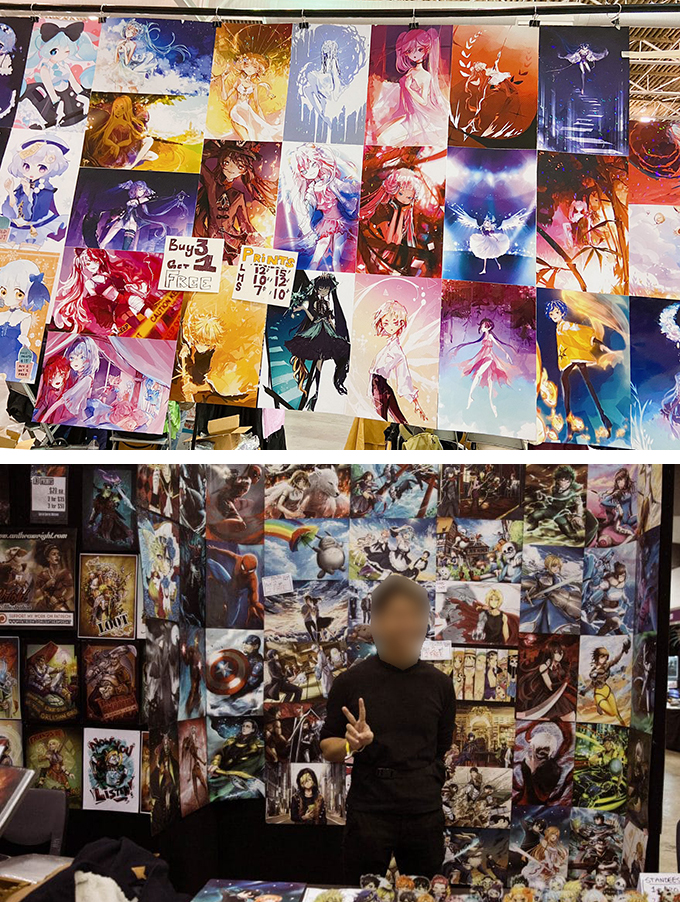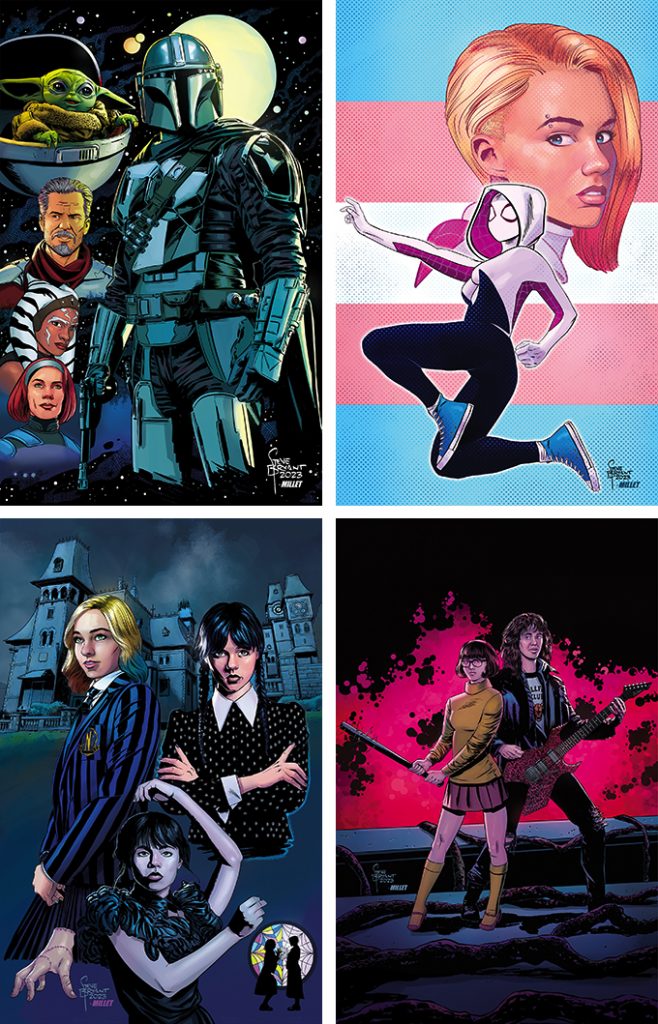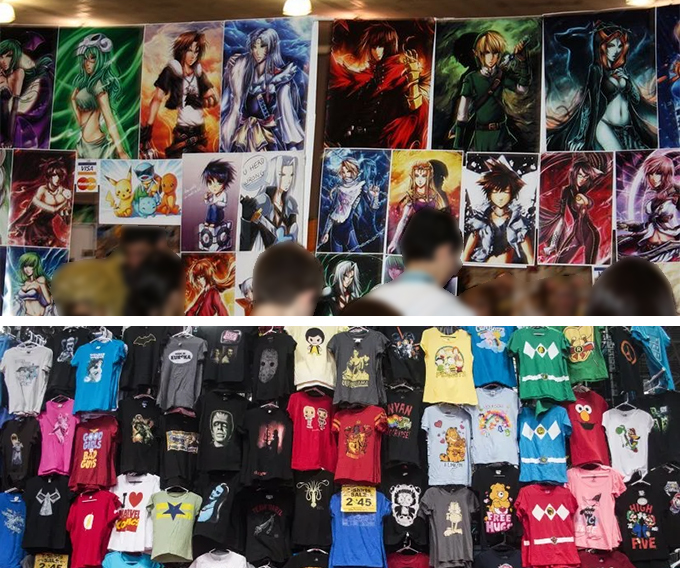Lots of creators sell prints at conventions. They’re an economical side hustle for creators who make comics, and they’re an end unto itself for exhibitors who specialize in selling prints exclusively.
Print Walls
If you’ve been to a comic convention, you’ve seen them: the massive walls of prints towering over other creators’ displays.

I know a lot of creators who hate these behemoths. I’m largely indifferent to them, unless they’re blocking the view of the table of their neighbor. For the most part, I view these booths the same way I do T-shirt booths at shows—as souvenir stands.
These artists’ prominence corresponds with the influx of people casually attending comic conventions. Casual attendees were introduced to the term “comic con” through shows like the Big Bang Theory, with its constant references to Comic-Con (specifically, San Diego Comic-Con). At this point, the designation has become a blanket term for comic conventions big-and-small across the country.
“Oh, you went to Comic-Con in San Diego? That’s so cool! I went to Comic-Con in Springfield!” Disproportionately different scale and event, but the enthusiasm is neat.
As a result, these folks attend a con, enjoy the experience, and want a souvenir. Prints and T-shirts are a great way to commemorate their visit.
There’s nothing wrong with inviting casual fans into our awesome medium. And there’s nothing wrong with giving them something to remember the experience.
Dipping a Toe in the Water
For the most part, I haven’t really done prints in the past. I’ve done small runs on lightweight cardstock of commissions I’d drawn, but never made a concerted effort to actually produce real prints. This year, I did four prints for San Diego Comic-Con.

The prints sold well. The most interesting distinction was that people who bought the prints weren’t interested in my comics or original art and the people who bought my comics and/or original art weren’t interested in the prints.
Souvenirs.
However, there was one special interaction that I had and it only happened because I made these prints. One print, specifically.
On the first day of the convention, a young Spider-Gwen cosplayer stopped by my table. They said they wanted to thank me for including the trans flag in the background of the Spider-Gwen print. They choked up as they explained that the scene in Across the Spider-Verse where Gwen reveals her identity to her father—color coded in the colors of the trans flag—resonated because it reflected how they felt when they came out to their father as gender fluid.
I responded by telling them that I’m a parent to a trans child and that the scene in the movie hit me, too. Of course, as I was saying this, I started choking up.
The next day, “Gwen” brought their dad by to introduce us.
Thanks, “Gwen,” for what is easily one of my best convention experiences ever.
(I know their actual first name and have a pic of “Gwen” holding up their print, but didn’t ask permission to share it in this context, so we’ll just go with “Gwen.”)
Representation
In my Character Design class, we start by dissecting what makes good designs, and we also have an exercise where the students redesign characters. As a part of this, we discuss fan art. In their excellent essay, Fanart Activism: Fan Participation as a Tool for Representation and Diversity Awareness, Tereza Walsbergerová states that “due to [fan art’s] visual character it has much bigger potential of becoming a special kind of sociopolitical activist tool by raising awareness about representation and diversity amongst fans of all ages from all over the world.”
Walsbergerová continues, “Depicting characters as female in male-dominated genres may certainly feel empowering to not only female fans of the show, but to anyone who does not necessarily identify as a straight male.”
My experience with “Gwen” and the connection we shared added an additional texture to my perception of prints at conventions.
Indie Band or Cover Band?
After the response I got from my four prints, I can certainly see the appeal of making prints exclusively. As an indie comic creator telling my own stories with my own characters, conventions can be a slog at times.
At a con, indie creators tell their elevator pitch over and over, frequently meeting with indifference. There’s a certain appeal to the electricity generated when someone recognizes a character they love and enthusiastically comes to the table, cash in hand—which happens regularly with fan art prints of popular characters.
The best comparison I can come up with is the difference between performing in a bar as an indie band—playing your own material—and being in a cover band that specializes in top hits or classic rock.
The indie band works hard to win the crowd over on every song, and the hardcore fans are there for them and them alone.
The cover band benefits from well-executed performances of established, beloved material, and forges a connection with their audience over this common ground.
Both contribute to their respective biospheres, providing a different kind of experience. I think it’s the same with prints at comic conventions.

But the print towers shouldn’t be in artist alley. Put ’em next to the T-shirt vendors and we’re good. 😉
